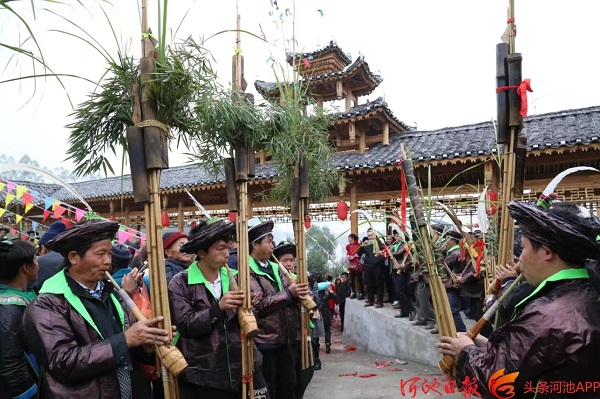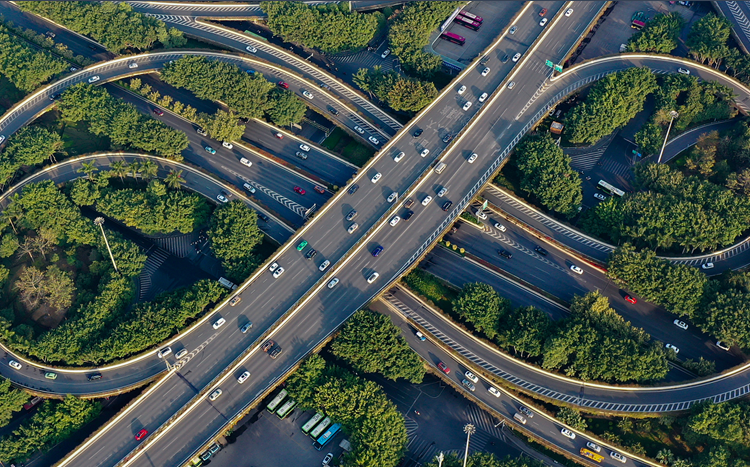Guangxi celebrating grand ethnic festival with influx of tourists
With romantic songs, bamboo stick dances and five-color glutinous rice, ethnic groups in south China's Guangxi Zhuang autonomous region are ushering in a particularly lively "March 3 Festival" this year.
More than 1,000 festive activities from folk song choirs to TV variety shows will take place across the region in the coming month, stretching beyond the three-day holiday that began on Friday this year, according to the regional government.
In Guangxi, March 3 of the lunar calendar, or "Sanyuesan," has been an important occasion to sing in the antiphonal (call-and-answer) style to find love, to worship ancestors and pray for a good harvest. It has been observed by many of the region's ethnic groups including Zhuang, Yao, Miao, Dong and Mulam.
Listed as a national intangible cultural heritage and a statutory holiday in Guangxi in 2014, the Sanyuesan Festival usually ushers in a tourist high season with its showcasing of colorful ethnic diversity.
"All seven rooms of my home inn had been fully booked a week before the holiday. We expect a particularly busy holiday so we also hired three other villagers as helpers," said Wu Junyi, a Mulam ethnic villager in Mianhua village, Luocheng Mulam autonomous county.
Boasting well-preserved Mulam traditions and architectures, the village has shaken off poverty since 2018 with the take-off of tourism. Solar street lamps and cliff swimming pools are now juxtaposed with corn fields and grape trellises to give the village a touch of modernity combined with antiquity.
The village received more than 80,000 tourists in the first quarter of 2023, and locals now anticipate the annual figure to exceed 300,000 amid an accelerated recovery in tourism.

People from Chenshuang village, Huanjiang Maonan autonomous county, play local instruments. [Photo/Hechi Daily]
In Chenshuang village, co-inhabited by 11 ethnic groups, workshops displaying traditional craftsmanship of wax dyeing, weaving and painting have just finished construction, while fishing and camping facilities have also been developed, to allow villagers to reap benefits from burgeoning cultural tourism.
"We are staging a reed-pipe performance of the Miao, Kam Grand Choir of the Dong and the folk song singing of the Zhuang. Our little village square is now crowded with visitors," said Wei Binglu, Party chief of the Chenshuang village.
Tourism practitioners said this year's Sanyuesan Festival has met strong enthusiasm from nationwide tourists, who are particularly interested in trips featuring local ethnic cultures.
"Our company's travel bookings during the festival jumped by at least 50 percent compared with the same period in 2019," said Chen Niankun, chairman of a travel agency based in the coastal city of Beihai.
"You can hardly find an empty room on the Weizhou Island now, as many tourists had booked ferry tickets and accommodation long before the holiday," Chen said.
The regional government of Guangxi has been actively promoting tourism and consumption to build on the momentum of economic recovery since the start of this year. Prior to the Sanyuesan Festival, the capital city Nanning launched a shopping festival with more than 800 promotional events to "offset the impact of COVID-19," according to the region's department of commerce.














